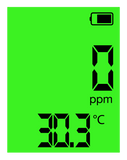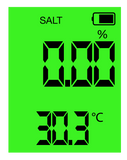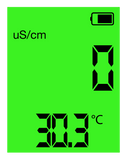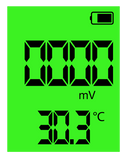Readings
Having balanced pool water is crucial for ensuring a safe and enjoyable swimming experience. When the water is balanced, it means that the pH, alkalinity, and calcium hardness levels are at the correct levels. If these levels are not balanced, it can cause discomfort to swimmers, damage to pool equipment, and make it difficult for sanitizers to work effectively. Balanced pool water also helps to prevent the growth of harmful bacteria and viruses, which can cause illnesses. By maintaining a balanced pool water, you can ensure that your pool is safe, comfortable, and enjoyable for everyone to use.
PH
Ideal 7.2 to 7.8
Calculated Range 0 to 14 pH
Maintaining the proper pH level is crucial for the health and safety of swimmers in a pool or hot tub. pH is a measure of the acidity or alkalinity of water, with a range of 0 to 14. A pH level of 7 is neutral, while a pH below 7 is considered acidic and above 7 is considered alkaline.
The ideal pH range for a pool or hot tub is between 7.2 and 7.8. Water that is too acidic or alkaline can cause skin and eye irritation, making it uncomfortable for swimmers to enjoy the pool or hot tub. A proper pH level is critical for the effectiveness of chlorine or other sanitizers in the water. If the pH level is too low, the chlorine becomes more acidic and less effective at killing bacteria and viruses. If the pH level is too high, the chlorine becomes less active and ineffective in sanitizing the water.
Furthermore, maintaining a proper pH level can help to keep the water clear and free of cloudiness or discoloration. This can improve the overall appearance of the pool or hot tub, making it more inviting for swimmers. In summary, maintaining the proper pH level is essential for the comfort and safety of swimmers, the effectiveness of sanitizers, and the clarity of the water in a pool or hot tub. Read more about pH...
TDS 
Ideal 1500 to 3000 ppm
Calculated Range 0 to 9990 ppm
TDS, or Total Dissolved Solids, is an important measurement to monitor in pool or hot tub water. TDS refers to the total amount of dissolved solids, including minerals, salts, and metals, in the water. High TDS levels can make the water appear cloudy and dull, and may cause scaling on surfaces and equipment. In addition, high TDS levels can interfere with the effectiveness of sanitizers and other chemicals used to maintain the water. Therefore, it is important to regularly test and maintain appropriate TDS levels in your pool or hot tub. By doing so, you can help to ensure that your water remains clear, safe, and comfortable for swimming and soaking.
SALINITY 
Ideal 0.25 to 0.40%
Calculated Range 0 to 25%
Salinity is an important factor to consider when maintaining a pool or hot tub. Salinity refers to the amount of salt in the water and is measured in parts per million (ppm). It is important to maintain the proper salinity levels in the water as it can affect the overall health and safety of swimmers, as well as the efficiency of pool equipment.
If the salinity levels are too low, it can cause corrosion of metal pool equipment and make it difficult to maintain a proper chemical balance in the water. On the other hand, if the salinity levels are too high, it can cause skin and eye irritation, and affect the efficiency of chlorine or other sanitizers.
By regularly monitoring and adjusting salinity levels in the water, pool and hot tub owners can ensure a safe and comfortable swimming experience for their users, prolong the lifespan of their equipment, and maintain an optimal chemical balance in the water.
EC 
Ideal 2.0 to 3.0 mS/cm
Calculated Range 0 to 20 mS/cm
EC (Electrical Conductivity) is an important measure of the total dissolved solids in pool or hot tub water. A high EC reading can indicate the presence of contaminants such as salts, minerals, and metals, which can cause issues with water clarity, equipment corrosion, and skin irritation. In addition, high EC levels can interfere with the effectiveness of sanitizers, making it harder to keep the water clean and safe for swimmers. By regularly monitoring EC levels in pool or hot tub water, it is possible to detect and address potential issues before they become more serious problems. Maintaining an appropriate EC level can help to ensure that the water is safe, clean, and comfortable for everyone to use.
S.G. 
Ideal 1.002 to 1.008
Calculated Range 1.000 to 1.222
Specific Gravity (S.G.) is an important measurement to monitor in pool or hot tub water as it helps to determine the water's overall density and concentration of dissolved solids. A high S.G. level can indicate an excess of dissolved solids, such as minerals, salts, or other contaminants, which can cause cloudiness, staining, and scale buildup on pool surfaces and equipment. On the other hand, a low S.G. level can indicate a lack of dissolved solids, which can make the water corrosive and damaging to pool equipment. By maintaining the proper S.G. level, you can help to prevent damage to your pool or hot tub and ensure that the water remains clear and free of harmful contaminants.
ORP 
Ideal 650 to 750 mV
Calculated Range -999 to 999 mV
ORP (Oxidation-Reduction Potential) is an essential parameter in maintaining healthy and safe pool or hot tub water. ORP is a measure of the sanitizer's ability to oxidize and eliminate contaminants in the water. It measures the cleanliness of the water and determines the effectiveness of the sanitizer, such as chlorine or bromine, in killing bacteria and viruses. An adequate ORP level ensures that the water is free from harmful pathogens, providing a safe and healthy environment for swimmers. By monitoring the ORP levels regularly, you can ensure that your pool or hot tub is adequately sanitized, reducing the risk of illnesses and infections.
TEMPERATURE 
Ideal as you wish!
Calculated Range 1C to 60C or 32F to 140F
Temperature compensation is essential in pool or hot tub water measurements because temperature affects the accuracy of pH readings. The pH scale is temperature-dependent, meaning that the pH value changes with temperature fluctuations. In general, pH decreases as temperature increases, and pH increases as temperature decreases. Therefore, to obtain accurate pH readings, temperature compensation must be applied to the measurements. By accounting for the temperature of the water, a digital pH meter can provide more precise and reliable pH readings, allowing for more effective pool or hot tub maintenance. Ultimately, temperature compensation ensures that pH measurements are accurate, and the correct amount of chemicals can be added to the water to maintain its balance and ensure a safe and comfortable swimming experience. Read more about temperature compensation...
